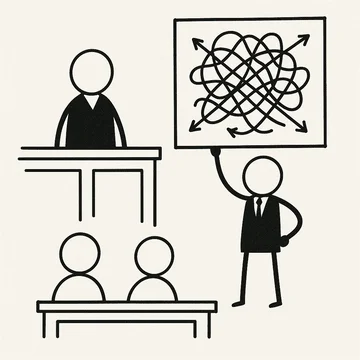
In patent infringement cases, plaintiffs' claim construction strategy sometimes seems to boil down to "Plain meaning! Construe it later! Everything is in!", while defendants often go for "No plain meaning! Construe it now! Our thing is out!".
Note that, for defendants, it's not necessarily that everything is out of the claim. It's often that there is one specific thing from the specification that is required, and that just happens to be the one thing the defendant's product doesn't have or do.
This strategy doesn't have a great success rate for defendants, but often I feel like the attitude is that "well it's worth a shot." I'm not sure that's always true, because a really bad argument on one term can hurt a parties credibility for other claim terms.
So what kind of argument risks a parties' credibility? We had a great example last week in Viking Technologies, LLC v. Squaretrade Inc., C.A. No. 20-1509-CFC-JLH (D. Del. July 8, 2022).
That case involved methods of repairing mobile phone displays. The claims required a display unit with three layers: a glass top, an "intermediate" layer, and an "electronic display portion" below.
The parties argued only a single point—whether the "electronic display portion" could include a polarizer filter. Defendant argued that it could not.
Apparently, nothing anywhere in the patent suggested that the display portion could not include a polarizer, but the specification did suggest that a different layer—the middle layer—may include a polarizer. Therefore, according to Defendant, the display on the bottom layer could not.
That's it. That's the entire argument, according to the opinion. Don't believe me? Here is basically the whole opinion, pointing out the defendants' fallacy:
The parties dispute the proper construction of the claim term “electronic display portion.” . . . The ʼ953 and ʼ537 patents disclose methods of removing damaged glass covers from mobile phone displays so that replacement glass can be attached. . . . Plaintiff argues that no construction is needed. Defendants argue that the term should be construed as “electronic display layer, which does not include a polarizer.” In short, the dispute is about whether the claimed electronic display portion (or layer) can include a polarizer.
The claims say nothing about whether the electronic display portion can include a polarizer. Nor does the patents’ common specification. Neither side has pointed to any relevant portions of the prosecution histories.
Defendants argue that the specification “make[s] clear” that the electronic display layer cannot contain a polarizer. . . . Their argument essentially goes like this: the specification says that the intermediate layer may include a polarizer [citations omitted]; thus, the electronic display layer cannot include a polarizer. That is flawed logic. I reject it.
Defendants have provided no other reason to include in the Court’s construction a requirement that the electronic display portion cannot contain a polarizer. Accordingly, I reject Defendants’ proposed construction. . . . The claim construction hearing scheduled for July 11, 2022 is CANCELLED.
I'm sure it sounded better in the briefing, but Court's opinion makes the defendants' logic error very apparent.
If the claim were to a car with an engine compartment, passenger compartment, and trunk, for example, the fact that the spec said that the battery may be stored in the trunk does not mean the claims must exclude cars with batteries in the engine compartment (the normal location) or in both places.
Luckily for defendants, I suppose, this was the only term briefed, so they had no other arguments to lose credibility on at the time. But, assuming there wasn't more to this, I do wonder how they thought this position was worth briefing and oral argument.
We may still hear more, though. The opinion was an R&R. The question now is: Will the defendants spend the time and effort to appeal this decision to Judge Connolly, arguing error? It's a patent case, so I'm guessing they will. But we'll see.
If you enjoyed this post, consider subscribing to receive free e-mail updates about new posts.






